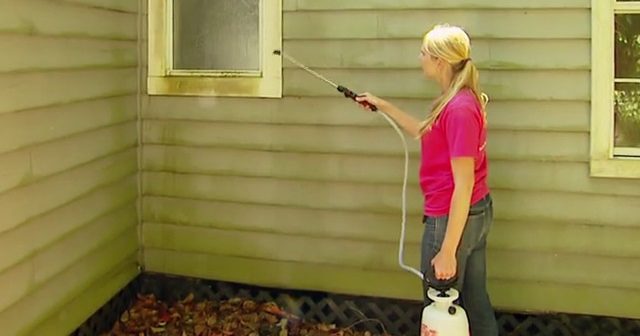If you suspect you have mold in your home or if you see mold, it’s important to determine where the mold is coming from. Since mold is caused by moisture, you need to find out where the moisture is getting into your home. Check your home for pipes that are leaking or sweating, a basement that is damp, or a leaking roof. Keep in mind that moisture can sometimes travel which means the place where you see the mold may not be in the exact spot of the leak.
Repair the Leak
Once you have identified the cause of the mold in your home, the first thing to do is to repair the leak and stop any additional moisture from building up. Depending on the type of leak, you can make repairs yourself. But for extensive damage, it’s best to call in a professional repair person who specializes in the issue you’re having. While waiting for the repair person, try to keep the area as dry as possible to prevent the mold from getting worse.
Identify the Best Cleaning Solution for the Surface
Once the cause of the moisture has been repaired, it’s time to clean up the mold. It’s important to choose the right cleaning solution so that the mold spores are killed and it cannot continue to grow. For non-porous surfaces such as countertops or one piece shower stalls, use bleach or a store-bought mold & mildew cleaner. This will remove the mold from the surface.
For porous surfaces, such as drywall, wood, or even clothing, you need to use something that will not only remove the mold from the surface, it will also kill the mold spores underneath. So, for porous surfaces, use distilled white vinegar (1 hour), a mixture of 3% hydrogen peroxide (10 minutes) and water or tea tree oil (leave on).
When I interviewed Steven Ip last week who does apartment cleaning Boston, he said, “For porous surfaces, spray on the solution and let sit for the recommended amount of time. If using anything other than tea tree oil, scrub the area after the recommended time.” He continued, “If you choose to use tea tree oil, it’s important to remove the mold first using vinegar or hydrogen peroxide. Apply the tea tree oil afterward and leave it on to prevent mold from returning.”
Follow Safety Precautions
When you are ready to clean and remove the mold from your home, make sure to follow safety precautions for mold removal. Mold is dangerous for humans. You want to take steps to make sure that you do not touch the mold with your skin or inhale any mold spores that come loose when you are scrubbing. Safety precautions for cleaning mold include the following:
- Isolate the moldy area if needed
- Spray with water to limit mold dust
- Wear a mask to prevent inhalation of mold spores
- Use gloves to protect your hands
- Wear long sleeves and long pants to avoid contact with skin
Dry the Area Thoroughly
Once you are sure you have removed all of the molds and treated the area to kill the mold spores, dry the area thoroughly. If necessary, use a fan to help dry the area out completely. Monitor the area by checking it frequently for any signs that mold is returning and repeat cleaning if needed.




